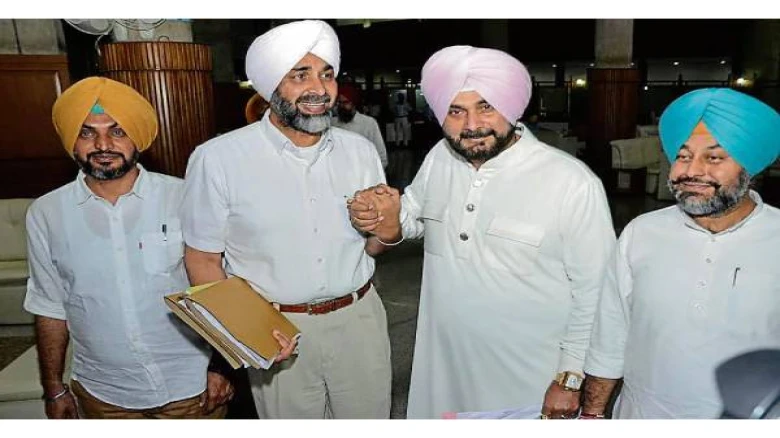Regional

The 73-page document stated, "The White Paper on the State Finances is an attempt to explain the complex issues/problems faced by the Punjab government in the sphere of finance, which has grown increasingly serious over time due to the imprudence of administrations of the past."
Digital
Desk: The White Paper on State Finances, tabled in the state Assembly here on
Saturday, claimed that Punjab is in an economic mess and a debt trap. Finance
Minister Harpal Singh Cheema blamed previous administrations for the budgetary
crisis in the document presented.
According
to the finance report delivered two days before the state budget was introduced
in the House, Punjab is currently in an economic disaster and a debt trap.
White
Paper stated, "The past administrations continued to engage in fiscal
profligacy instead of taking necessary corrective action." The unchecked
increase in unproductive revenue expenditure, undeserved favors, and subsidies,
the virtual cessation of investments in the social and capital sectors crucial
to future growth, and the failure to realize its potential tax and non-tax
revenues all serve as indicators of financial debt.
The
73-page document stated, "The White Paper on the State Finances is an
attempt to explain the complex issues/problems faced by the Punjab government
in the sphere of finance, which has grown increasingly serious over time due to
the imprudence of administrations of the past."
Reportedly,
Punjab's current effective outstanding debt is 2.63 lakh crore rupees or 45.88
percent of the SGDP.
It
stated that the state's existing debt indicators were arguably the worst in the
nation and were driving it farther into a debt trap.
Although
the previous administration claimed to have implemented fiscal responsibility
in managing state finances, it secretly decided not to pay off the state
government's outstanding debts.
Sadly,
they have followed the footsteps of their predecessors and passed over huge
immediate and medium-term liabilities of Rs 24,351.29 crore that the new
government must pay off over the ensuing years, according to the paper.
The
state's debt has increased by 44.23% during the past five years, which
translates to an annual compound growth rate of 7.60%.
According
to the document, the state is in a classic debt trap since a sizable amount of
the annual gross debt/borrowings contracted by the government is used to pay
off the previous debt and interest payments rather than for the state's future
development and prosperity.
It
pointed out that the state's outstanding debt has increased from Rs 1,009 crore
in 1980-81 to Rs 83,099 crore in 2011-12 and further to Rs 2,63,265 crore in
2021-22.
According
to the report, Punjab has fallen from first to eleventh place and now trails
several other states in terms of per capita income across the nation.
According
to the White Paper, the 6th Punjab Pay Commission was rushed into
implementation in July 2021, just six months before the State Assembly
elections, even though it was supposed to take effect in January 2016.
Due
to the implementation of the 6th Punjab Pay Commission, the previous
administration could not pay the arrears of revised pay from January 1, 2016,
to June 30, 2021. As a result, it is anticipated that this account's pending
liabilities will total roughly Rs 13,759 crore.
A
thorough review of the expenditure commitments and direct income growth strategies
is required to restore Punjab to its former glory days, boost economic growth
and recovery, harmonize state budgets, and lessen reliance.
The
study indicates that among the corrective measures, NSE 1.42 percent on debt,
structural, and policy efforts are needed with hitherto unheard-of levels of
ground-level implementation.
Leave A Comment